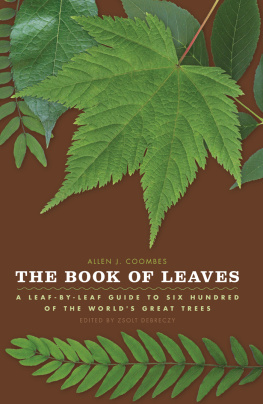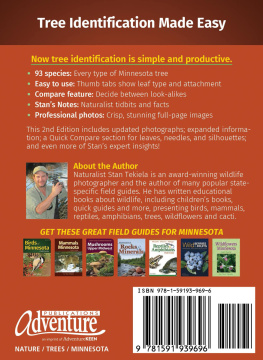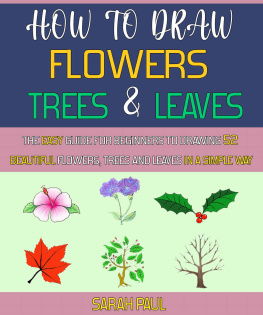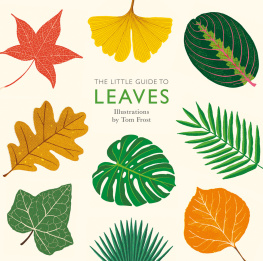Allen J. Coombes - The Book of Leaves: A Leaf-by-Leaf Guide to Six Hundred of the World’s Great Trees
Here you can read online Allen J. Coombes - The Book of Leaves: A Leaf-by-Leaf Guide to Six Hundred of the World’s Great Trees full text of the book (entire story) in english for free. Download pdf and epub, get meaning, cover and reviews about this ebook. year: 2010, publisher: The University of Chicago Press, genre: Art. Description of the work, (preface) as well as reviews are available. Best literature library LitArk.com created for fans of good reading and offers a wide selection of genres:
Romance novel
Science fiction
Adventure
Detective
Science
History
Home and family
Prose
Art
Politics
Computer
Non-fiction
Religion
Business
Children
Humor
Choose a favorite category and find really read worthwhile books. Enjoy immersion in the world of imagination, feel the emotions of the characters or learn something new for yourself, make an fascinating discovery.
- Book:The Book of Leaves: A Leaf-by-Leaf Guide to Six Hundred of the World’s Great Trees
- Author:
- Publisher:The University of Chicago Press
- Genre:
- Year:2010
- Rating:5 / 5
- Favourites:Add to favourites
- Your mark:
The Book of Leaves: A Leaf-by-Leaf Guide to Six Hundred of the World’s Great Trees: summary, description and annotation
We offer to read an annotation, description, summary or preface (depends on what the author of the book "The Book of Leaves: A Leaf-by-Leaf Guide to Six Hundred of the World’s Great Trees" wrote himself). If you haven't found the necessary information about the book — write in the comments, we will try to find it.
Of all our childhood memories, few are quite as thrilling, or as tactile, as those of climbing trees. Scampering up the rough trunk, spying on the world from the cool green shelter of the canopy, lying on a limb and looking up through the leaves at the summer sun almost made it seem as if we were made for trees, and trees for us.Even in adulthood, trees retain their power, from the refreshing way their waves of green break the monotony of a cityscape to the way their autumn transformations take our breath away.
In this lavishly illustrated volume, the trees that have enriched our lives finally get their full due, through a focus on the humble leaves that serve, in a sense, as their public face. The Book of Leaves offers a visually stunning and scientifically engaging guide to six hundred of the most impressive and beautiful leaves from around the world. Each leaf is reproduced here at its actual size, in full color, and is accompanied by an explanation of the range, distribution, abundance, and habitat of the tree on which its found. Brief scientific and historical accounts of each tree and related species include fun-filled facts and anecdotes that broaden its portrait.
The Henrys Maple, for instance, found in China and named for an Irish doctor who collected leaves there, bears little initial resemblance to the statuesque maples of North America, from its diminutive stature to its unusual trifoliolate leaves. Or the Mediterranean Olive, which has been known to live for more than 1,500 years and whose short, narrow leaves only fall after two or three years, pushed out in stages by the emergence of younger leaves.
From the familiar friends of our backyards to the giants of deep woods, The Book of Leaves brings the forest to lifeand to our living roomsas never before.
Allen J. Coombes: author's other books
Who wrote The Book of Leaves: A Leaf-by-Leaf Guide to Six Hundred of the World’s Great Trees? Find out the surname, the name of the author of the book and a list of all author's works by series.











 The paper used in this publication meets the minimum requirements of the American National Standard for Information SciencesPermanence of Paper for Printed Library Materials, ANSI Z39.48-1992.
The paper used in this publication meets the minimum requirements of the American National Standard for Information SciencesPermanence of Paper for Printed Library Materials, ANSI Z39.48-1992.



